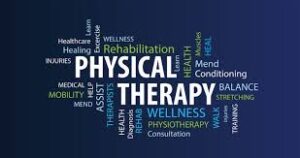
The Synergy of Wellness and Physical Therapy: Enhancing Health and Quality of Life Introduction.
Wellness and physical therapy are two interconnected fields that work hand in hand to promote optimal health and improve the quality of life. While wellness focuses on achieving overall well-being through various lifestyle choices, physical therapy plays a crucial role in restoring and maintaining physical function. In this article, we will explore the relationship between wellness and physical therapy, highlighting how they complement each other in promoting a holistic approach to health. We will delve into the benefits of physical therapy in enhancing wellness and discuss how incorporating wellness principles can optimize the outcomes of physical therapy interventions. Understanding Wellness.
1. Definition of Wellness: Wellness encompasses a state of complete physical, mental, and social well-being, beyond the mere absence of disease. It involves making conscious choices and adopting behaviors that promote optimal health and overall well-being.
2. Dimensions of Wellness: Wellness is often categorized into various dimensions, including physical, emotional, intellectual, social, spiritual, and environmental. Each dimension contributes to an individual’s overall wellness and requires attention and nurturing.
3. Lifestyle Choices: Wellness is achieved through a combination of healthy lifestyle choices, such as regular exercise, balanced nutrition, stress management, adequate sleep, and positive social interactions. These choices promote physical and mental well-being, reduce the risk of chronic diseases, and enhance overall quality of life.
The Role of Physical Therapy in Wellness:
1. Restoring Physical Function: Physical therapy focuses on restoring and improving physical function, mobility, and strength. By addressing musculoskeletal and neurological conditions, physical therapy helps individuals regain independence and enhance their overall physical well-being.
2. Pain Management: Physical therapists employ various techniques, including manual therapy, therapeutic exercises, and modalities, to alleviate pain and improve quality of life. By reducing pain, physical therapy enhances an individual’s ability to engage in daily activities and maintain an active lifestyle.
3. Injury Prevention: Physical therapists play a vital role in preventing injuries by assessing movement patterns, identifying biomechanical imbalances, and providing guidance on proper technique and injury prevention strategies. By addressing these factors, physical therapy helps individuals avoid injuries and maintain their physical wellness.
4. Chronic Disease Management: Physical therapy interventions are beneficial for individuals with chronic conditions such as arthritis, cardiovascular diseases, and diabetes. Physical therapists develop customized exercise programs that help manage symptoms, improve functional capacity, and enhance overall wellness.
5. Rehabilitation and Recovery: Physical therapy is essential in the rehabilitation and recovery process following surgeries, accidents, or sports injuries. By providing targeted exercises, manual therapy, and functional training, physical therapists help individuals regain strength, mobility, and function, facilitating a faster and more complete recovery. III. Integrating Wellness
Principles of Physical Therapy:
1. Patient Education: Physical therapists educate patients on the importance of healthy lifestyle choices, including exercise, nutrition, stress management, and sleep. By incorporating wellness principles into their treatment plans, physical therapists empower patients to take an active role in their own well-being.
2. Holistic Approach: Physical therapists consider the individual as a whole, addressing not only the physical aspects but also the emotional, social, and environmental factors that impact wellness. This holistic approach ensures comprehensive care and promotes overall well-being.
3. Collaborative Care: Physical therapists often work in collaboration with other healthcare professionals, such as nutritionists, psychologists, and wellness coaches, to provide a multidisciplinary approach to wellness. This collaboration ensures that all aspects of an individual’s well-being are addressed and optimized. Wellness and physical therapy are intertwined disciplines that synergistically contribute to the promotion of optimal health and quality of life. Physical therapy plays a crucial role in restoring physical function, managing pain, preventing injuries, and facilitating rehabilitation. By integrating wellness principles into physical therapy interventions, individuals can further enhance their overall well-being. The incorporation of healthy lifestyle choices, patient education, and a holistic approach ensures that physical therapy interventions not only address the physical aspects but also promote emotional, social, and environmental wellness. By embracing the synergy between wellness and physical therapy, individuals can achieve a state of complete well-being and enjoy a higher quality of life.
